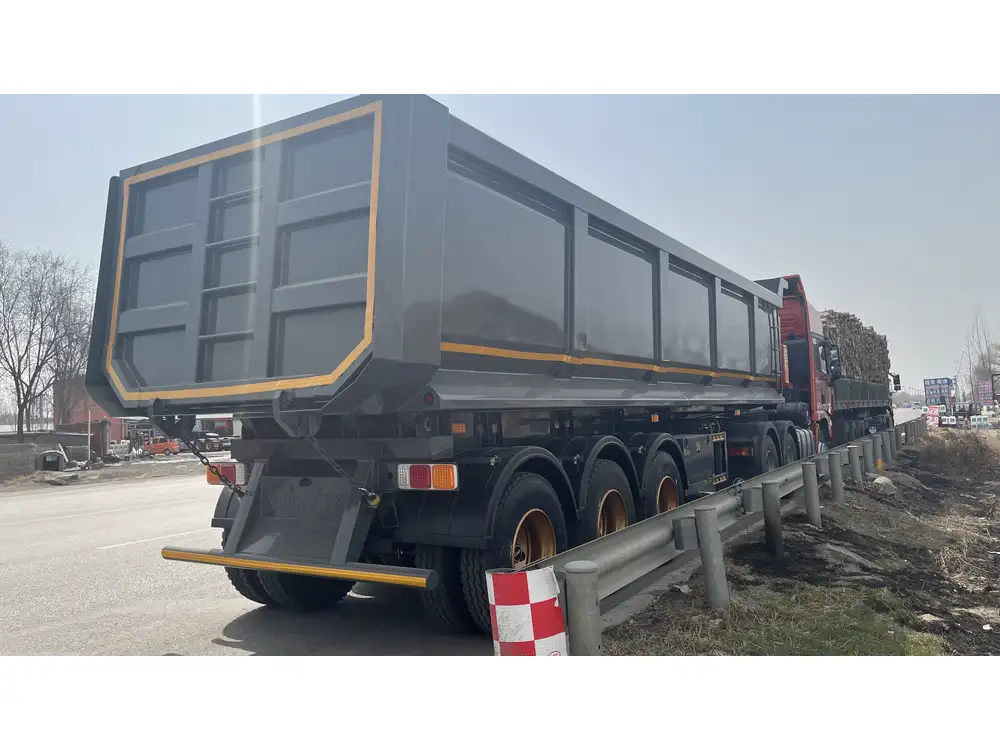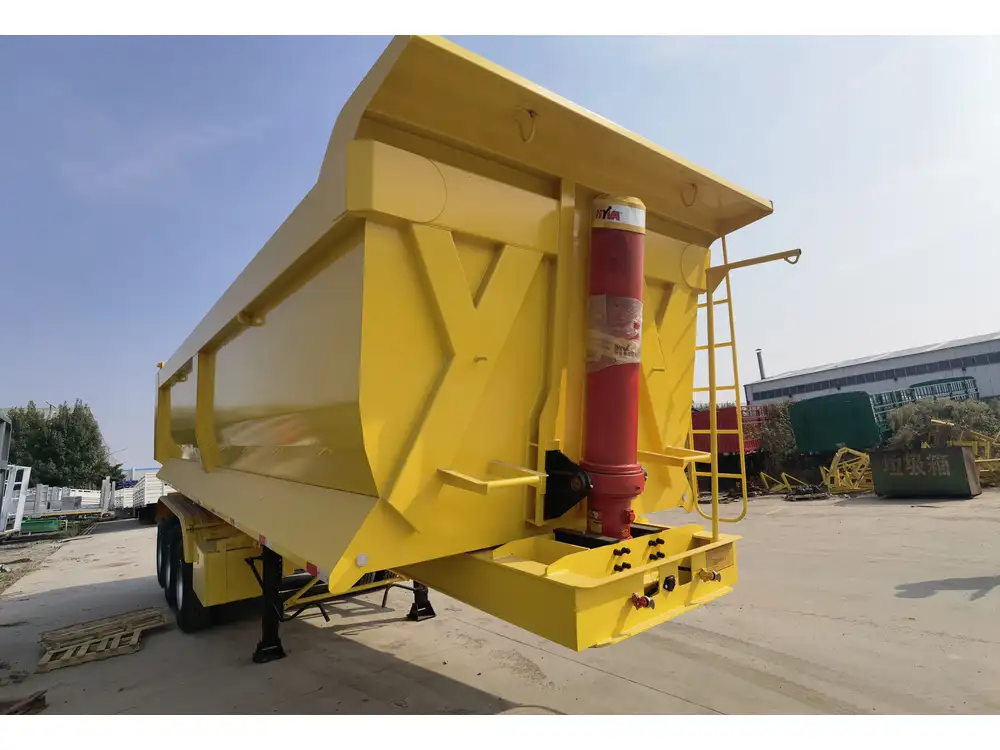In the realm of logistics and transportation, the phrase “semi without a trailer” may seem paradoxical. After all, semitrucks, or tractor units, are specifically designed to tow trailers, making them intrinsic to freight movement. However, this concept opens a wider discussion regarding the functionality, structure, and operations of these vehicles.
This article aims to dissect this intriguing notion, analyzing the roles and characteristics of semitrailers. We will delve into various aspects including the components of a semi, their operational purposes, and contextual scenarios that relate to the absence of a trailer.
1. What Constitutes a Semi-Truck?
To comprehend the semi without its trailer, we must first dissect its key components. A semitrailer truck, colloquially known as a semi-truck or tractor, consists of two primary parts:
| Component | Description |
|---|---|
| Tractor Unit | The front part of the semi that contains the engine, driver’s cab, and driving controls. It’s primarily responsible for moving the vehicle. |
| Trailers | The back part, which can vary widely in design depending on the cargo it’s intended to transport (e.g., dry van, reefer, flatbed). |
Every component plays a crucial role in ensuring that goods are transported efficiently and safely from point A to point B.
1.1 The Role of the Tractor
The tractor unit serves formidable responsibilities. It is equipped with powerful engines, often exceeding 400 horsepower, which are crucial in providing the traction and speed necessary for heavy hauling. Made robustly to withstand extreme conditions, the tractor is a marvel of engineering. Features such as:
- Advanced Suspension Systems: Allow for smooth rides.
- Safety Technologies: Such as Anti-lock Braking Systems (ABS) and Electronic Stability Control (ESC).

1.2 The Importance of Trailers
Trailers are designed to hold goods securely. Depending on the type of trailer, their functionalities diverge significantly. Here’s a glimpse of different trailer types:
| Trailer Type | Description |
|---|---|
| Dry Van | Enclosed trailer for non-perishable goods. |
| Reefer | Refrigerated trailer for perishable items. |
| Flatbed | Open trailer for heavy or oversized loads. |
| Tankers | Specialized for transporting liquids. |
2. The Significance of the Semi Without Its Trailer
2.1 Functional Implications
In practical terms, a semi without its trailer functions quite differently than one with a trailer attached. While capable of moving at significant speeds, the absence of a trailer means:
- Weight Capacity Reduction: The overall transport capacity is drastically decreased.
- Driving Dynamics: The truck may handle differently, which can affect maneuverability and braking.

2.2 Common Scenarios of a Trailer-less Semi
There are scenarios in which a semi might be found without a trailer:
- Maintenance and Repairs: Sometimes, units require servicing, which might lead the truck to operate independently.
- Empty Hauls: A semi may travel without a trailer to pick up a load.
- Transporting the Tractor Alone: In certain cases, tractors need relocation without trailers.
3. Legal and Regulatory Aspects
Understanding the regulations concerning semis is paramount for both manufacturers and operators.
3.1 Licensing and Compliance
In most jurisdictions, drivers require a Commercial Driver’s License (CDL) to operate a semi truck. This includes mastery over the unique handling characteristics of operating without a trailer. Furthermore, regulations dictate the weight and dimensions permissible for operation without a trailer.

3.2 Safety Requirements
Legal standards are in place to ensure safe operations. Notably, the following considerations come into play:
- Visibility: Extra measures may be necessary to account for the length and visibility when a semi rolls without a trailer.
- Load Restrictions: Regulations prevent semis from traveling above specific weight limits, impacting operations when unhitched.
4. Operational Challenges of a Semi Without a Trailer
Without a trailer, operators may encounter various challenges.
4.1 Fuel Efficiency
Semitrucks typically demonstrate higher fuel efficiency when pulling a trailer, as they are designed to work optimally in that configuration. When not equipped with a trailer:
- Drag Reduction: The aerodynamics change, potentially increasing air resistance.
- Engine Load Management: The engine might behave differently under various conditions, affecting fuel consumption.

4.2 Visibility and Control
Driving a semi-truck is inherently complex, and without the added length of a trailer, visibility dynamics shift:
- Unique Handling Dynamics: The absence of a trailer impacts turning radius and rear visibility.
- Blind Spots: The truck may present different blind spots compared to when attached to a trailer.
5. Economic Considerations
5.1 Impact on Revenue Streams
Operating a semi without a trailer can present unique financial implications for trucking companies:
- Cost of Empty Hauls: Transportation without cargo can negatively impact profitability.
- Increased Insurance Costs: Insurance for commercial vehicles without cargo can be surprisingly high due to perceived risks.

5.2 Depreciation and Asset Management
Trucking businesses invest considerably in their fleets. When a semi operates without a trailer, depreciation rates may vary:
| Financial Aspect | Considerations |
|---|---|
| Asset Longevity | Regular usage intimates better asset management for depreciation. |
| Maintenance Costs | Higher wear and tear could lead to increased costs. |
6. Conclusion: The Duality of Semis and Trailers
In closing, the analysis of what a semi without a trailer involves reveals significant implications for functionality, regulations, and operational efficiency. While a semi-truck can technically operate solo, it fundamentally alters its utility. The economic factors also propel discussions about the viability and relevance of such operations.
Ultimately, a comprehensive understanding of the semi-trailer relationship is instrumental for manufacturers, operators, and businesses engaging in freight transport. As the industry evolves, with advancements in technology and environmental considerations, these discussions will only grow more complex and nuanced.
In summary, while a semi without a trailer may appear functionally remiss, it showcases the intricate interdependencies woven into the world of logistics and transportation—a reminder of how critical the synergy between semis and trailers truly is for operational success.



